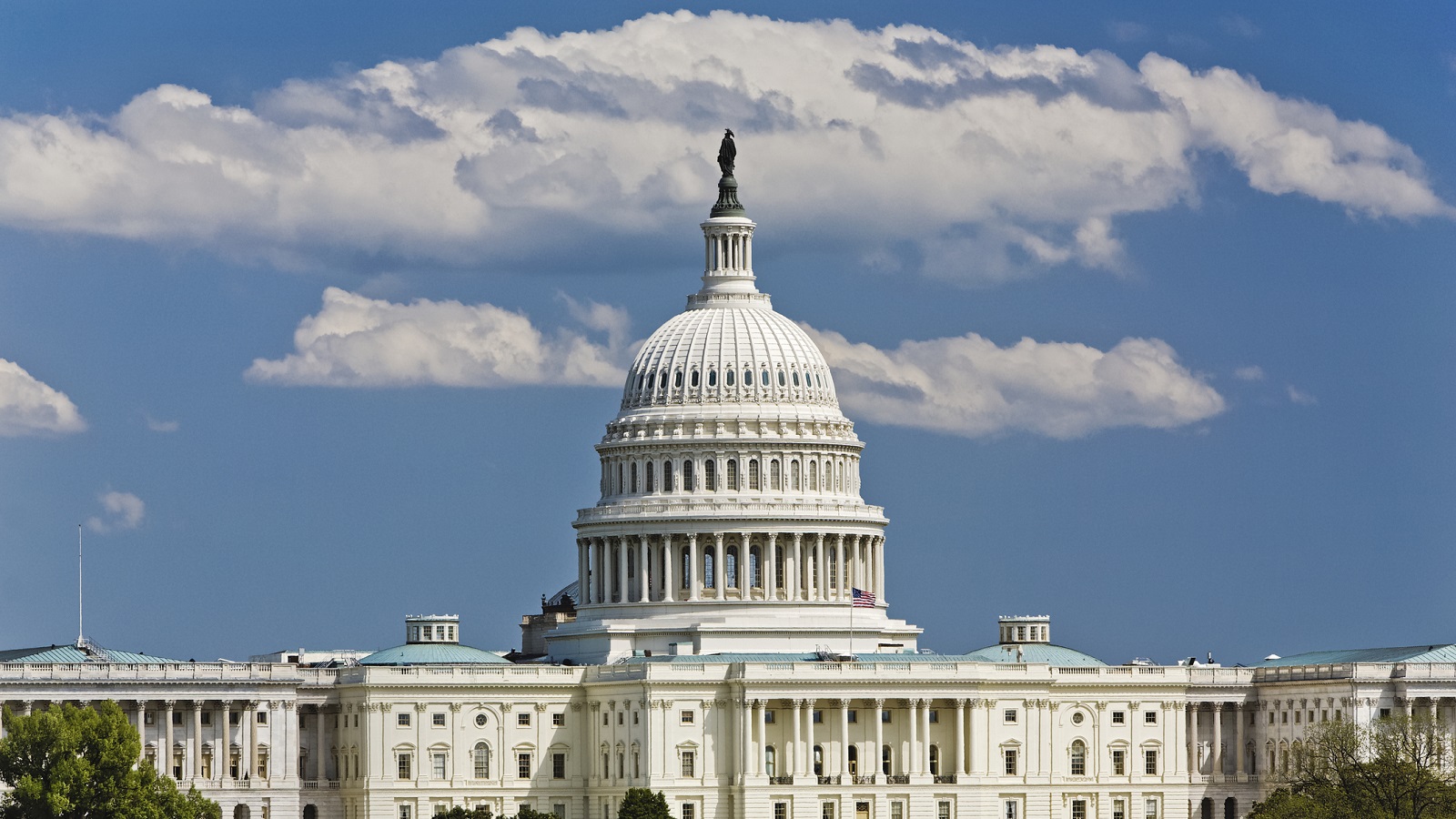Child Tax Credit: JD Vance Floats Enhanced Version in Surprise Pledge
Trump’s vice presidential nominee has suggested enhancing the federal child tax credit. Here’s why it matters.


After a series of controversial remarks painting leading Democrats as “anti-family,” Republican vice presidential nominee Sen. JD Vance is trying to dig himself out of what some see as a negative political limelight — this time, focusing on the federal child tax credit (CTC).
Less than two weeks after skipping a Senate vote that would have enhanced the child tax credit and failed due to GOP opposition, Vance floated the idea to raise the credit by 150% from its current $2,000 amount.
“I mean, look, I’d love to see a child tax credit that’s $5,000 per child,” the Republican senator of Ohio told CBS’ Face the Nation. “But you, of course, have to work with Congress to see how possible and viable that is.”

Sign up for Kiplinger’s Free E-Newsletters
Profit and prosper with the best of expert advice on investing, taxes, retirement, personal finance and more - straight to your e-mail.
Profit and prosper with the best of expert advice - straight to your e-mail.
Vance also suggested the CTC expansion should “apply to all American families” and not feature a “massive cutoff” for lower-income households. Currently, the tax credit phases out for single filers earning over $200,000 and married couples filing jointly that earn over $400,000 annually.
There is also an income requirement, meaning parents must work and earn a minimum of $2,500 per year to qualify for the credit. Notably, Vance has previously told reporters that some people are “obsessed with their jobs,” implying that laws should support the option of one parent staying home with the children.
However, Vance hasn't yet clarified how his version of the CTC expansion would work, or if repealing a minimum income requirement would be a part of his plans.
Here’s more on what's been happening with the child tax credit, why Congress needs to act soon, and what it all means for you.
JD Vance child tax credit proposal
About 40 million taxpayers claim the child tax credit each year, and several proposals have been floated in recent years to expand the key tax break for households that need it the most.
Lawmakers have long debated alternatives to enhance the CTC, including:
- Credit amount: How much of the credit should be available per child
- Income limit: Repealing the earned income threshold, and making the tax credit available to families with little or no income
- Refundability limit: Determining how much of credit should be refundable, and available to parents who owe very little or nothing in income taxes
- Age of child: Raising the cut-off age for eligible children
- Inflation: Adjusting the credit amount for inflation
- Tax filing: Allowing parents the option to use the prior year’s income to qualify for the credit
Vance’s proposal is the latest addition to the narrative — but it had a hollow landing among others in Congress.
“If JD Vance sincerely gave a whit about working families in America, he would have shown up in the Senate a week and a half ago and voted for my proposal to expand the child tax credit and help 16 million low-income kids get ahead,” Senate Finance Committee Chair Ron Wyden (D-Ore.), said in a press statement. “He didn’t even care enough to use his platform to call on his Senate Republican colleagues to support it.”
Sen. Wyden co-authored the bipartisan $79 billion tax bill that would have expanded the child tax credit over the next few years. The measure called to raise the cap on the child tax credit for low-income families, making them eligible for the full $2,000 benefit. It would also allow parents to claim the credit for each qualifying child.
Ultimately, the bipartisan tax package, which passed the House was blocked by Republicans, in a procedural vote of 48-44 — short of the 60 it required to advance.
“It was a show vote,” Vance told Face the Nation. “If I had been there, it would have failed.”
According to the Joint Committee on Taxation’s evaluation of the bipartisan tax bill, the expansion of the CTC would have cost about $33 billion through 2025 as it was written, and roughly $180 billion if made permanent. Additionally, the tax break would be fully paid for by limiting excessive payments from the pandemic-era Employee Retention Credit (ERC).
Vance’s proposal would carry a substantially higher price tag, according to calculations from the Committee for a Responsible Federal Budget, a nonpartisan think tank.
Expanding the child tax credit to $5,000 per child could translate to “$2-$3 trillion in additional borrowing over the next decade,” Marc Goldwein, senior policy director for Committee for a Responsible Federal Budget told CBS MoneyWatch.
Reviving the child tax credit debate
If there’s one silver lining, it’s that Vance may have revived discussions on the future of the child tax credit. Some other proposals touted by the Republican vice presidential nominee in his campaign run include:
- Eliminating surprise medical bills on parents when they visit an out-of-network provider
- Expanding the child tax credit to $5,000 per child
The ongoing discussions on the child tax credit could be a positive, Prosperity Now CEO and President Marisa Calderon told Kiplinger.
“In some ways, I’m encouraged by the fact that both parties are talking about topics where there needs to be alignment,” Calderon said. “Families are dependent on us putting ego aside and doing the hard work of ensuring that children don’t go hungry, that people have a place to live, and basic human needs are met.”
Democrats have been trying to bring back the federal expanded child tax credit since the American Rescue Plan Act (ARPA) expired, but have so far failed.
According to the U.S. Census Bureau, the temporary tax provision cut child poverty by almost half within a year, to its lowest rate on record. Overall, it lifted 5.3 million people — including 2.9 million children — out of poverty in 2021.
The child tax credit could face another cut as soon as next year.
Unless Congress agrees on a bipartisan deal to address the child tax credit, the tax credit will revert to $1,000 per child in 2026.
Under the 2017 Tax Cuts & Jobs Act (TCJA) the benefit was doubled temporarily to $2,000 per child. Without action from Congress, the age of qualifying children would also be reduced to 16, down from 17 years of age. The tax provision is due to sunset at the end of 2025.
Bottom line: What’s going to happen with the CTC this year?
Though Congress has failed to pass legislation on an expanded CTC, the future of the tax credit will likely be a centerpiece in the election discussion.
As Kiplinger has reported, Democratic presidential nominee, Vice President Kamala Harris has called for a CTC expansion, with support from her running mate Gov. Tim Walz of Minnesota.
Notably, Walz enacted a Minnesota state child tax credit, the largest CTC in the nation, at $1,750 per child. To date, 12 states offer expanded state child tax credits and more could follow.
As for the chances of Congress deciding on the CTC expansion this year? It’s not completely off the table, says Calderon. That’s why voters should stay informed regarding discussions on tax policy during this election cycle, whether at the federal or state level.
Related Content:
Get Kiplinger Today newsletter — free
Profit and prosper with the best of Kiplinger's advice on investing, taxes, retirement, personal finance and much more. Delivered daily. Enter your email in the box and click Sign Me Up.

Gabriella Cruz-Martínez is a seasoned finance journalist with 8 years of experience covering consumer debt, economic policy, and tax. Before joining Kiplinger as a tax writer, her in-depth reporting and analysis were featured in Yahoo Finance. She contributed to national dialogues on fiscal responsibility, market trends and economic reforms involving family tax credits, housing accessibility, banking regulations, student loan debt, and inflation.
Gabriella’s work has also appeared in Money Magazine, The Hyde Park Herald, and the Journal Gazette & Times-Courier. As a reporter and journalist, she enjoys writing stories that empower people from diverse backgrounds about their finances no matter their stage in life.
-
 6 Stunning Waterfront Homes for Sale Around the US
6 Stunning Waterfront Homes for Sale Around the USFrom private peninsulas to lakes, bayous and beyond, Kiplinger's "Listed" series brings you another selection of dream homes for sale on the waterfront.
By Charlotte Gorbold Published
-
 Six Reasons to Disinherit Someone and How to Do It
Six Reasons to Disinherit Someone and How to Do ItWhether you're navigating a second marriage, dealing with an estranged relative or leaving your assets to charity, there are reasons to disinherit someone. Here's how.
By Donna LeValley Published
-
 Why You May Owe More Tax Soon on Popular Employee Benefits
Why You May Owe More Tax Soon on Popular Employee BenefitsTax Law Workers could foot the tax bill for employer-provided benefits like parking, gyms, and meals.
By Kate Schubel Published
-
 Are Armed IRS Agents Headed to the Border?
Are Armed IRS Agents Headed to the Border?IRS Enforcement The Trump administration is considering a controversial move to redeploy some IRS agents.
By Kelley R. Taylor Last updated
-
 Trump Federal Employee Buyout Offer: What It Means for You Now
Trump Federal Employee Buyout Offer: What It Means for You NowLaw & Politics The federal deferred resignation program accepted by thousands of workers continues to cause confusion and concern.
By Kelley R. Taylor Last updated
-
 ‘Back to the Old Days’? What’s Wrong With Trump’s Plan to Abolish Income Tax
‘Back to the Old Days’? What’s Wrong With Trump’s Plan to Abolish Income TaxTax Policy The likelihood of Trump eliminating income tax and the IRS remains low, but the ongoing debate highlights the need for tax reform.
By Kelley R. Taylor Last updated
-
 No New IRS Agents? What Trump’s Federal Hiring Freeze, Firings Mean for Your Taxes
No New IRS Agents? What Trump’s Federal Hiring Freeze, Firings Mean for Your TaxesIRS Will an executive order and firing IRS workers reshape the federal tax agency and impact how long it takes to get your tax refund?
By Kelley R. Taylor Last updated
-
 Trump's ‘One Big, Beautiful Bill’ With Trillions in Tax Cuts: House Moves Forward
Trump's ‘One Big, Beautiful Bill’ With Trillions in Tax Cuts: House Moves ForwardTax Policy Is it possible to combine taxes, border security, and energy policy into a single piece of legislation to be passed within Trump's first 100 days?
By Kelley R. Taylor Last updated
-
 The TCJA May Help Nonprofits Next Year: Here’s Why
The TCJA May Help Nonprofits Next Year: Here’s WhyTax Law A potential TCJA extension could help nonprofits. But is it enough to keep up with inflation?
By Kate Schubel Published
-
 Election 2024 Childcare Debate: Harris-Walz vs. Trump-Vance Plans
Election 2024 Childcare Debate: Harris-Walz vs. Trump-Vance PlansElection As Election Day approaches, the Republican and Democratic tickets present different ideas for childcare and family tax credits. Here's what to know.
By Gabriella Cruz-Martínez Published